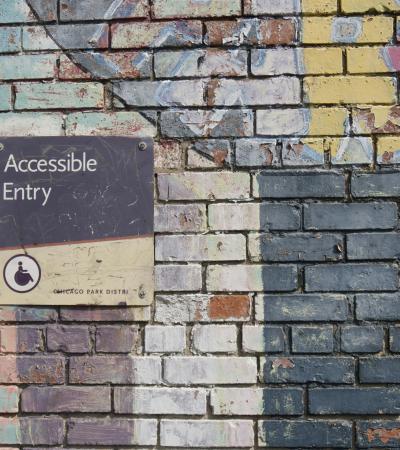
In 2022, the American Library Association (ALA) launched a grant opportunity to fund hundreds of small and rural libraries looking to better serve the needs of patrons with disabilities. To understand what library workers are learning as they use these funds, Knology analyzed interim reports from 213 LTC libraries. In this post, we share findings from 35 libraries whose projects focused on enhancing accessibility for older adults. Though age is not a disability, many older adults experience barriers with vision, mobility, cognition, and other age-related changes that directly impact how they interact with their environment daily.
What kinds of accessibility improvements are most beneficial to aging populations in small and rural communities, and to what extent are libraries making these?
Through community conversations, LTC libraries learned that their elderly patrons are primarily interested in accessibility upgrades that do the following:
Improve physical accessibility
Physical accessibility is a priority for many older adults, especially those with mobility disabilities and/or low vision. Making sure that library buildings, entrances, exits, and bathrooms are ADA-compliant and safe for this population is therefore a key step libraries can take to become more inclusive spaces.
In Midland, PA, staff at the Carnegie Library Midland Branch learned that their 108-year-old building can be difficult to navigate safely. Patrons who struggle with balance reported difficulties walking up and down the uneven, worn surfaces of the building's limestone stairs, while other elderly patrons raised concerns about heavy doors and low railings that are difficult to grasp. To address these impediments, the library plans to install treads on its stairs (which will help those with vision disabilities see where each step begins and ends), and to collect bids for repairing their surfaces — along with the installation of better railings. The library also plans to consult an architect in the hopes of installing push bars on the building's doors.
During a community conversation, the Solon Public Library in Solon, IA, also learned about the importance of physical access for older patrons. After hearing from elderly individuals who reported difficulties using the library's designated accessible parking spots, staff investigated these spots and found that they were not in compliance with ADA requirements. Aware that this could also pose problems for wheelchair users and those who use mobility devices like canes and walkers, staff then decided to raise the issue with older patrons who attended the community conversation. As a result, the library determined that its LTC funds would be best spent making its parking lot truly accessible.
Bridge the digital divide
A second key priority for older patrons in small and rural communities is gaining access to the internet and becoming competent users of digital technologies. Many LTC libraries launched projects designed to decrease the “digital divide” between older and younger patrons.
During a “Coffee Hour” session held at the Effingham Public Library in Effingham, New Hampshire, staff learned that many older adults — and particularly those with mobility and vision challenges — frequent the library's website for information about events, programs, and services. Once made aware of this, the library contracted with a web designer to make their site ADA-compliant and more user-friendly for adults. Some of the adjustments made have already been tested with older patrons.
Libraries are also responding to requests for digital technology training. During a community conversation at the Mooers Free Library in Mooers, NY, older visitors voiced interest in the creation of a "Technology Corner" — a space that would allow them to experiment with existing technologies and learn how to use the internet safely. They also suggested that the library offer training programs in external locations like senior living facilities.
Provide opportunities for social connection and visibility
Another basic need that often goes unmet among older populations in small and rural areas is the need for social connection. Libraries play a key role in bringing community members into contact and providing both space and programmed activities where different groups can meet and build relationships. Many of the small and rural libraries that focused their accessibility projects on older populations learned from aging community members that social connection is also a path toward enhanced visibility. Older library patrons at several LTC libraries told staff that they often feel invisible, but library programs that cater to their age group help make them feel seen, in part through outreach that acknowledges and speaks directly to older populations and in part by bringing them into contact with other older adults and reassuring them that they are not alone.
At the Belding Memorial Library in Ashfield, MA, older patrons put forth a wealth of ideas for promoting social connection among elderly community members. They suggested that staff create regular programming targeting older audiences (instead of special one-off events), that the library host events at places where they are already congregating (including a local senior facility and meetings at the local Council on Aging), and that a space be created for discussing issues of importance to them — for example, sexual health (something often considered taboo or irrelevant for aging populations). In response to these recommendations, the library is partnering with the local Board of Health to design and host regular workshops on aging, disability, and sexuality.
Accessibility and visibility are often overlapping priorities for older adults. At the Neuse Regional Library in Kinston, North Carolina, staff learned that to become truly inclusive, they would need to amplify the voices and stories of older community members -- particularly those who go unheard because of Alzheimer's, dementia, or other forms of memory loss. In response to a suggestion that the library chronicle and preserve the life stories of elderly individuals, staff initiated a large-scale oral history project designed to capture people's experiences of living in rural North Carolina. The library has already begun training staff on how to interview older patrons, and has also forged a partnership with North Carolina's DigitalNC program, which will permanently archive the stories they collect. The project will ensure that the memories of older North Carolinians become part of the state's history, guaranteeing that these individuals are seen and heard for generations.
Meet older populations where they are
One question a number of LTC libraries must answer when working to serve older populations is how to reach this population – especially those who require at-home services, who live with mobility disabilities, or who for other reasons cannot travel to the library. The need to reach the many older adults in small and rural communities who are “aging in place” is also complicated by the lack of technology access and training for this group. To solve this problem, libraries must search for creative ways to conduct outreach to the older adults in their communities as well as ways to include this population in their programs and services.
At the Community Library in Salem, WI, staff heard from an older adult with a mobility disability who encouraged them to conduct outreach in the places where the elderly are already present — be it in their homes or common gathering places like a senior center, the Lion's Club, or even local grocery stores (especially on senior discount days). Through partnerships with centers, clubs, and stores, libraries can spread awareness of their offerings and expand on the services they provide to older adults. As an example of this, consider the experience of the Conejos Library District in La Jara, CO, which gained access to an otherwise difficult to reach population through a partnership with Meals on Wheels (an organization that delivers home-cooked dishes to individuals in their homes). Collaboration with Meals on Wheels enabled staff to launch an initiative called "Bring the Library to You," which makes a variety of resources (books, magazines, arts and crafts, puzzles, and information about library programs and services) available to people in their homes.
Making age-related accessibility a priority
As LTC libraries continue to develop and carry out their accessibility projects, we are eager to hear more about the lessons they are learning, the challenges they are overcoming, and the opportunities they are pursuing to become more inclusive spaces.
About this Article
This article is part of a series of blog posts exploring how libraries that received funds through ALA’s LTC: Accessible Small & Rural Communities are working to better meet the needs of patrons with disabilities. In other posts in this series, we look at attempts to put the disability rights movement’s ethic of “Nothing About Us Without Us” into practice and consider efforts focused on neurodivergent patrons and older adults. For more on how libraries can become more accessible to patrons with disabilities, see the collection of resources we assembled. And for more information about LTC, see our historical overview of this initiative.
Knology is a nonprofit research organization that produces practical social science for a better world. The organization pursues this goal to help professionals in a variety of sectors build inclusive, informed, and cooperative societies that can thrive together with the natural systems on which we all depend. As a transdisciplinary collective of over 30 social scientists, writers and educators, the organization's work process is built on equity, transparency and deliberation.



